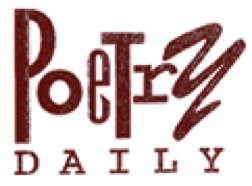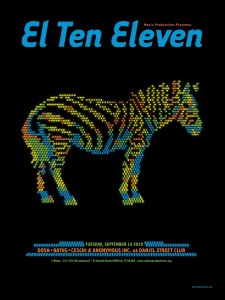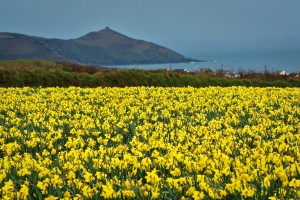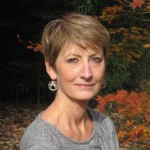 In her introduction to The Penguin Anthology of 20th Century American Poetry Rita Dove cites exorbitant reprint costs as the reason for omitting work by Allen Ginsberg and Sylvia Plath. In her rebuke to Helen Vendler she suggests that her selections from Wallace Stevens and other unspecified omissions were also a matter of financial exigency. In that same document Dove asserts that “buried antipathies” may provide the motives for omissions of other authors. As one of the readers who is having difficulty understanding the full aesthetic agenda behind her choices, I can imagine an Editor’s Afterward which could clear the air.
In her introduction to The Penguin Anthology of 20th Century American Poetry Rita Dove cites exorbitant reprint costs as the reason for omitting work by Allen Ginsberg and Sylvia Plath. In her rebuke to Helen Vendler she suggests that her selections from Wallace Stevens and other unspecified omissions were also a matter of financial exigency. In that same document Dove asserts that “buried antipathies” may provide the motives for omissions of other authors. As one of the readers who is having difficulty understanding the full aesthetic agenda behind her choices, I can imagine an Editor’s Afterward which could clear the air.
The decision to include so many writers who were hardly peaking in the twentieth century remains mysterious to me, but I suspect that any venture by various editors in that direction would produce heated disagreement about the most promising candidates. In fact, I don’t want to consider erasing any of the poets she includes; since we’re in virtual space, for now, hurrah for abundance. Let them stay; we can simply agree to disagree about who the rising stars might be. I think Dove should, however, come clean about two categories she refers to – the too-expensive poems and the buried antipathies. It would be valuable for me to know exactly what poems and poets were disqualified for economic reasons. It must have been frustrating to know that, although she was engaged to render a personal, rather than a consensus, anthology, she would be constrained by inadequate funds. If she would reveal those expensive works, we could see more clearly what her ideal anthology would have looked like. I would really love to see her ideal Table of Contents.
Secondly, it would be useful to know which poets were excluded (or limited) due to “buried antipathies.” I don’t even want to know what those antipathies are; that an editor employs them in her selection is probably TMI, but now that we have this shadowy category, might as well name the names.
Just as Dove includes many poems which are skillful and widely appreciated but just don’t rank as indispensible to me, she also omits some poets whose work seems to me seminal, not just in my private court of taste, but (if Pulitzers and other acclaim really mean anything) in the court of public opinion. Some of these poets, like Marie Howe and Charles Bernstein are not part of my private anthology-of-the-mind, not on my bookshelves, but I am convinced of their accomplishments and influence. Clearly Dove has done some of the same wincing while selecting.
The following list, I am convinced, belong in such a garden at least as much as more than half of those in the book. Maybe someday a Walrus or Caribou Press will invite me to muster an anthology, and then I’ll explain my quirks, some of which hinge on subject matter, others on prosody, narrative force, cultural position, God-knows-what.
Robert Penn Warren and these other poets from the past: John Crowe Ransom, Donald Justice, Kenneth Rexroth, as well as these established contemporaries, many of them winners of Pulitzers, National Book Awards, Bollingens and so on: Ellen Bryant Voigt, Dave Smith, Eleanor Ross Taylor, Claudia Emerson, Where there’s a pattern, there’s an agenda, and you can likely get a fix on mine. But also: Tim Siebles, Bob Hicok, Charles Bernstein, Marie Howe, John Hollander, Richard Howard, Wendell Berry, Brendan Galvin, Linda Hogan, Robert Wrigley, Jack Gilbert, Linda Gregerson, Lyrae Van Clief Stefanon and Louise Glück.
And there’s one significant demographic of consequence that I’d especially like to see represented in such an anthology, whether through Lynn Powell or Kay Byer, Byron Herbert Reese, Fred Chappell, Robert Morgan – the rising tide of Appalachian writers. Dove gives us Charles Wright, but the early poems she selected (reprint costs could have played a role here) for Wright camouflage his Tennessee mountain roots fairly well. This community of writers are not provincial nor isolated and should not be invisible.
It’s hard to ignore the absence of so many Southern poets of serious accomplishment without concluding that they are the casualties of a corrective impulse running through the anthology, a desire to counterbalance previous anthologies which may be tied to the buried antipathies and which I can’t much fault Dove for, knowing I would be inclined to do something similar on behalf of a group of poets I value and believe have been given the sharp end of the stick. Showing all the cards face up would help readers along, allow them to look straight into the light of the featured work and the omissions, instead of guessing at “buried antipathies,” and more easily understand how Dove sees this anthology fitting in with others – the Norton and Vendler’s The Harvard Book of Contemporary American Poetry for instance.
If controversy sells books and sales yield readers, this Penguin may open doors for some potential readers who previously saw walls, and bravo to that. It does not seem to have been constructed as a textbook, though it can certainly be used as one, with some provisos, and it will surely be handy to many for honey dipping and savoring. And it has put the bees in the bonnet and left many of us asking with renewed urgency, “Just what does make a poem a wonder?” There’s an old joke: “What do you get when you cross a Mafia don with a modern poet?” Pause, pause: “Somebody who makes you an offer you can’t understand.” Some days I hear the truth behind that and don’t want to see any more products of a guild that has become to some degree and industry, but other days I read Komunyakaa or Justice, Kumin or Henry Taylor, Warren or Kizer or Mark Doty and say “amen” and “encore.” Like Stafford’s justly famous narrator, I am “listen[ing] hard for all of us,” and whatever’s out there rattling the saplings and trampling the brush, extending the range of that great song roared by Whitman and whispered by Dickinson, it’s moving along various paths, and it’s not all manufactured or conjured from stagnant air, as many non-poets are quick to say about modern verse. Truth is, it’s alive, and who’s surprised that many scholars and poets are willing to scrap over questions of quality and ownership? Maybe a dispute that’s already giving off plenty of heat will also grant Goethe’s dying request for “more light, more light.”
 Yesterday I had the pleasure of speaking with the Maori poet and scholar, Alice Te Punga Somerville. Alice was born and raised in Aotearoa, New Zealand and she is currently a visiting Professor of Aboriginal Studies at the University of Toronto. I have been studying poetry from the Pacific in my Twenty-First Century Poetry class with Professor and Poet, Lesley Wheeler, so it was exciting to meet a real poet from this portion of the globe.
Yesterday I had the pleasure of speaking with the Maori poet and scholar, Alice Te Punga Somerville. Alice was born and raised in Aotearoa, New Zealand and she is currently a visiting Professor of Aboriginal Studies at the University of Toronto. I have been studying poetry from the Pacific in my Twenty-First Century Poetry class with Professor and Poet, Lesley Wheeler, so it was exciting to meet a real poet from this portion of the globe.







 Rita Dove’s anthology (The Penguin Anthology of 20th Century American Poetry) is like all other anthologies in that it has good, bad and indifferent features. Two questions raised in Helen Vendler’s now-notorious review in The New York Review of Books and Dove’s even more notorious rebuttal have been on my mind today. The first, the definition of “American,” I have a strong opinion about; the other, which is a question of quantity, leads to more shadowy questions.
Rita Dove’s anthology (The Penguin Anthology of 20th Century American Poetry) is like all other anthologies in that it has good, bad and indifferent features. Two questions raised in Helen Vendler’s now-notorious review in The New York Review of Books and Dove’s even more notorious rebuttal have been on my mind today. The first, the definition of “American,” I have a strong opinion about; the other, which is a question of quantity, leads to more shadowy questions.